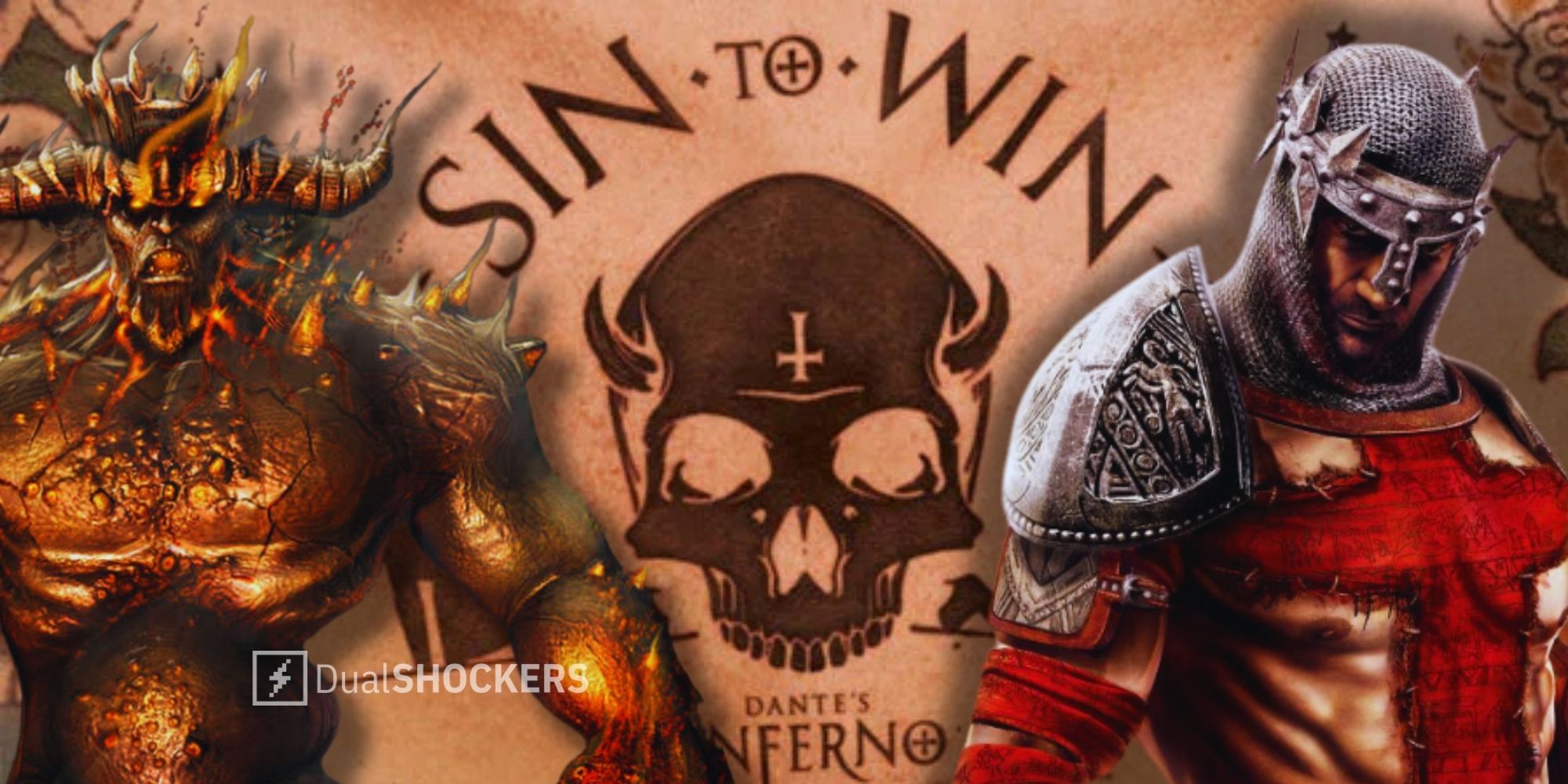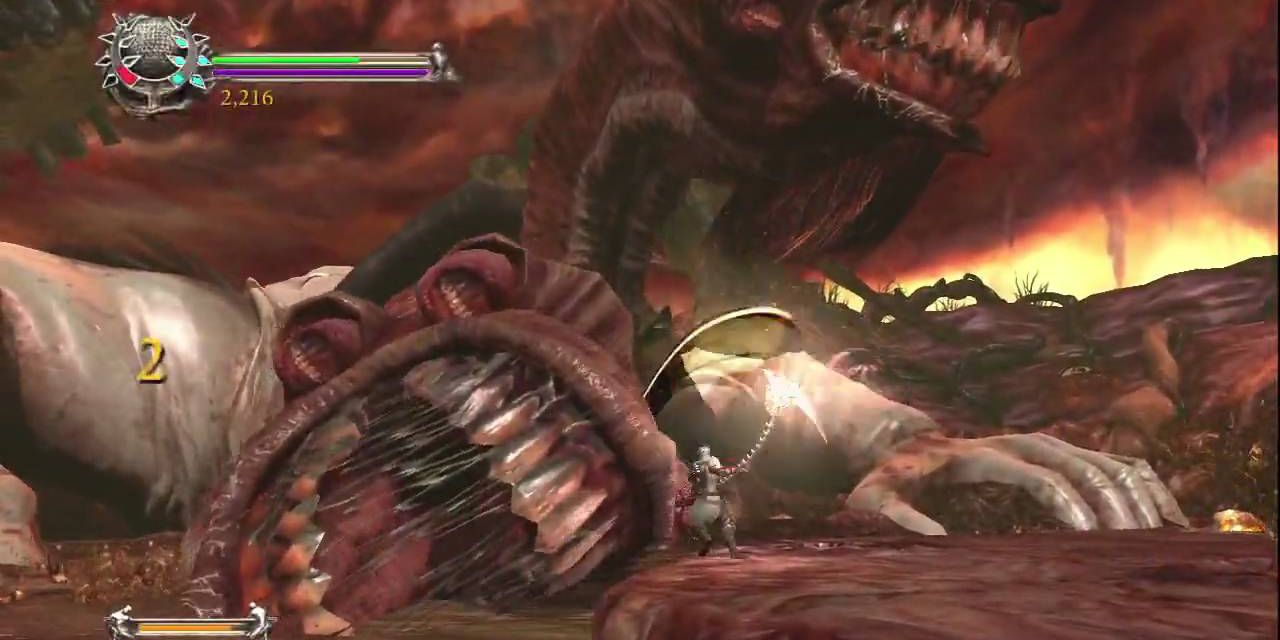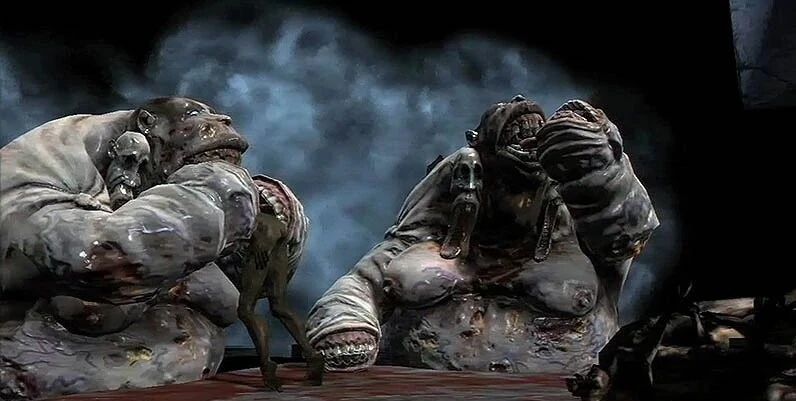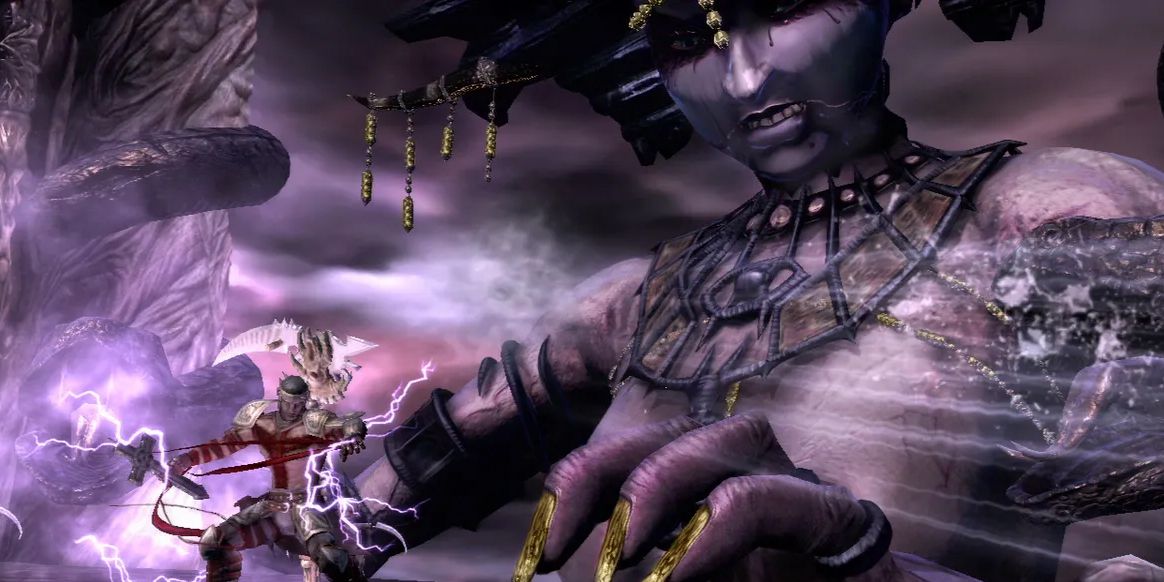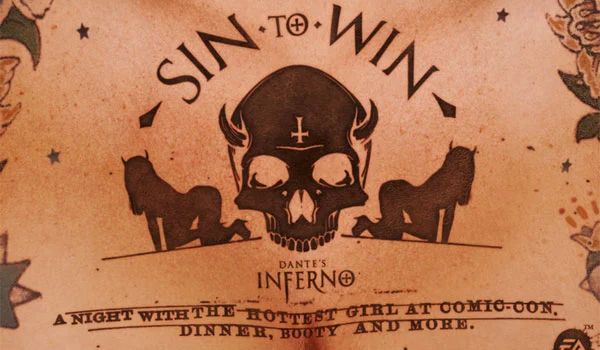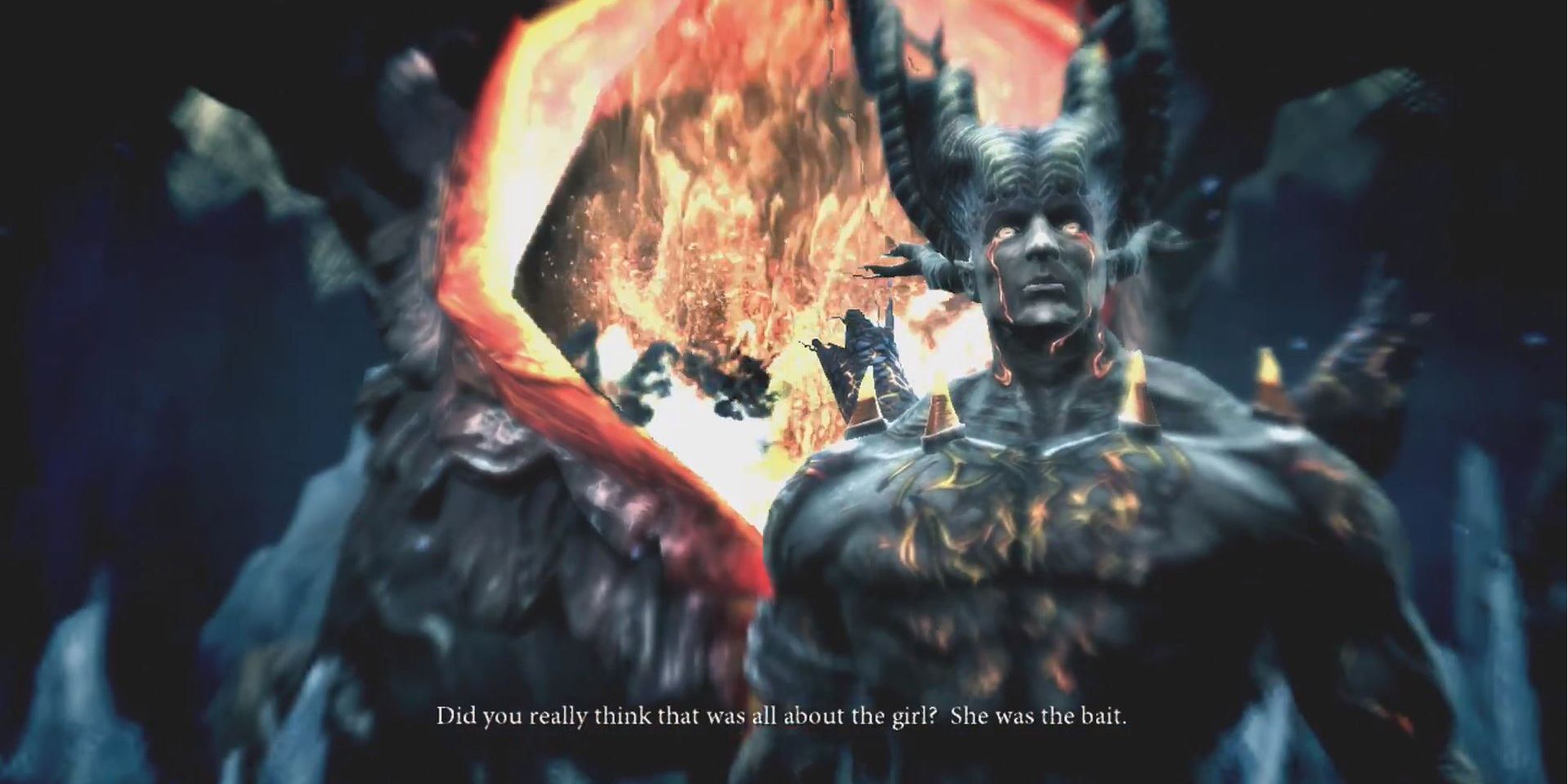Every now and again, a game explodes onto the scene in such a fury of forceful marketing and jawdropping presentation that you can’t help but look back every now and then, and wonder ‘what happened to that game?’ For me, that game is Dante’s Inferno: an action-slasher God of War rip-off in which you fight Lucifer by scything him in his fully dangly footlong schlong, kill Death with his own scythe, and fight embodiments of Christianity’s Seven Deadly Sins. Oh, and EA promoted it in a marketing campaign that came dangerously close to bribery and pimping, but we’ll get to that later.
But let’s start with the fine work of the game’s developer Visceral Games (of Dead Space fame) before moving onto the sins of the father (or EA, in this case). Based fairly liberally on Inferno, the opening chapter of Dante Alighieri’s epic 13th-century poem The Divine Comedy, you take control of a juiced up, psyched up Dante, who ventures into hell to rescue his lover Beatrice from the hairy paws of Lucifer himself.
Stabbed in the back by an enemy soldier during the Crusades, with reality falling away around you as the Grim Reaper rises out of the ground to take you to the next life, you rise up, beat the shit out of him, steal his scythe, and head off to save your damsel. It’s all very butch, consecrated by a totally unnecessary scene where Dante sows a giant red fabric cross into his chest (because guilt and penance, but in the manliest damn way possible!).
In truth, Dante himself is a bit of a dolt, and there really isn’t much to him. The real joy of the game lies in going through the Seven Circles of Hell, each representing one of the seven deadly sins, and each designed in a delightfully gothic and evocative way. In Gluttony, you fight morbidly obese fleshbags with mouths for hands, and at one point climb down a wall while avoiding fire blasted from what I’m pretty sure are giant butt-holes. Lust is filled with horny woman-warriors, and people trapped in walls begging to be pleasured while sounding very much in agony, all while a giant demonic Cleopatra climbs a phallic tower like King Kong and goads you from up on high. Greed is basically a giant gold smelter, while Anger (which isn’t actually one of the sins, but hey-ho) has a more classic ‘hellfire and brimstone’ vibe.
Each ‘Circle’ is strongly thematised, and it’s all so symbolically on-the-nose, obvious and, well, visceral, that I just can’t help but love the excess of it all. The game is paced in such a way that just as you’re reaching the end of one chapter, you’re looking forward to the bizarre art style, dumb enemies, and colossal bosses that await in the next hell-circle. Granted, by the end of the game, the game resorts to reusing enemies and the environments become a little less striking, but for several hours it’s a barrage of big bosses with booming voices and spectacularly hellish imagery.
Clearly, Dante’s Inferno wouldn’t exist without God of War, but it’s actually got its own connections to Greek myth by way of the source material. The Divine Comedy was heavily inspired by Greek Mythology, and that’s reflected in the game, with many elements of its underworld echoing that of Hades. It features the ferryman Charon, transporting folks over the river to the underworld, and the Styx is here too, albeit as a toxic swamp rather than a river. The game takes liberties with the real (or in most cases mythological) source material, but would you really have expected any different from a game that presents itself in every way as a Catholic God of War?
You encounter emaciated, worn-out iterations of legendary or semi-legendary characters like the Greek poet Orpheus, Attila the Hun, and Emperor Frederick II, getting little info snippets about their respective sins before choosing whether to ‘Absolve’ or ‘Punish’ them. Even thematising each of the bosses around particular sins echoes the gods of Greek mythology, and how each is responsible for a particular element (be it the sea, lightning, love, or war). It’s an iteration of hell that feels far more imaginative and better-suited to games than the typical molten lava and horned demons with goat legs (though you do get a bit of that here too).
Where the game suffered was for contenting itself to be a God of War derivative.
Coming out a mere month before God of War 3 (whoever at EA thought that it’d be a good idea to release it so close to the far more established Sony IP?), Dante’s Inferno drew on previous-gen God of War games for inspiration, which meant that mechanically it felt pretty rudimentary compared to God of War 3, which quickly overshadowed it. It was the classic gameplay of swooshing your scythe at enemies in arena-like settings, juggling them, and racking up those old-school action game combos.
Its main mechanical hook was the choice of going down the ‘Holy’ or ‘Unholy’ path, which was based around whether you ‘absolved’ or ‘punished’ enemies you grab-attacked, as well as how you dealt with the various historical and mythical sinners you’d encounter down there. Going down the Holy path would let you fire iridescent blue crosses at enemies, among other magic-oriented moves, while the Unholy path was more about juggling enemies, hooking them in with your scythe, and brutal finishing moves.
In reality though, this had no effect on the game’s ending, and you could pretty much beat the game using just a couple of the combos or spamming that Holy Cross. But Dante’s Inferno had such a cool, evocative vision of the Seven Circles of Hell (however comically silly it may have been) that I happily button-bashed my way through it a couple of times.
So what really went wrong for it?
Well, first of all while Visceral did a fine job with the game itself, EA’s marketing campaign for it was perhaps the cringiest and unethical (dare I say ‘sinful’?) in gaming history. First up, EA had a “Sin to Win” competition at Comic-Con, where it encouraged people to commit “acts of lust” with the scantily clad women at the Dante’s Inferno booth (known back in the bad old days as Booth Babes) for a chance to win dinner with said women.
Incredibly, the flier didn’t get any more specific than that. It simply encouraged folks to photograph said “acts of lust” with the booth babes then send the photos in to EA for the chance to win a date with “two hot girls,” complete with “limo service” and “paparazzi.” Ooof, how would that even look? What would be the expectations of the hapless sweaty dude who ‘won’ this competition, then went on a pseudo-date with two women paid to be there? It sounds like either an unbearably awkward encounter worth of recording, or a lawsuit waiting to happen.
On top of that, EA sent $200 cheques addressed to specific games journos, all stylised and positing the conundrum that whether you cashed or got rid of them, you’d be committing the sin of either avarice or prodigality (both falling under ‘Greed,’ apparently). Despite the stylised presentation and awkward attempt to tie it into the theme of the game, it reeked of bribery. Kotaku famously burned the cheque, while Joystiq cashed it and donated the proceeds to a womens’ charity. Naturally, we’re not likely to hear from the journos who simply cashed the cheques for themselves, nor know about the scores they gave the game.
Despite selling over a million copies, Dante’s Inferno didn’t hit EA’s sales expectation, which (again) is hard not to attribute to the fact that it was a God of War derivative released a mere month before the hugely hyped God of War 3. What did EA expect? That this fun but fledgling new IP would somehow steal God of War’s thunder? Work on a sequel, based on the next Divine Comedy poem Purgatorio, did get underway, but was canceled due to the underperformance of the original game.
As such, Dante’s Inferno exists as a weird relic of an edgelord era, but if you can forgive EA’s sins when attempting to market it, then it remains a wild, slashy dash through a rendition of hell that’s unlike anything else.

